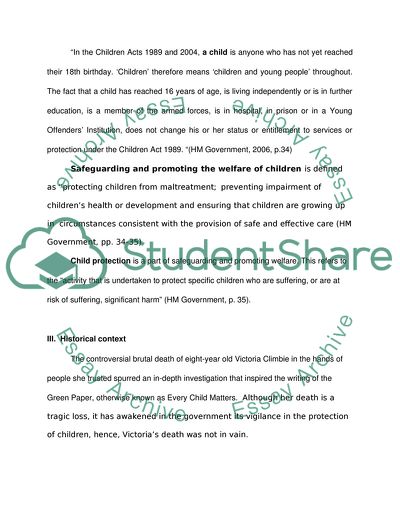Cite this document
(The Special Place of Children in Society Research Paper, n.d.)
The Special Place of Children in Society Research Paper. Retrieved from https://studentshare.org/social-science/1749524-the-every-child-matters-series-of-documents-set-out-the-most-important-proposals-for-change-in-the-field-of-child-safeguarding-which-have-been-produced-in-the-last-three-decades-evaluate-the-possible-impact-of-these-proposals-considering-not-only
The Special Place of Children in Society Research Paper. Retrieved from https://studentshare.org/social-science/1749524-the-every-child-matters-series-of-documents-set-out-the-most-important-proposals-for-change-in-the-field-of-child-safeguarding-which-have-been-produced-in-the-last-three-decades-evaluate-the-possible-impact-of-these-proposals-considering-not-only
(The Special Place of Children in Society Research Paper)
The Special Place of Children in Society Research Paper. https://studentshare.org/social-science/1749524-the-every-child-matters-series-of-documents-set-out-the-most-important-proposals-for-change-in-the-field-of-child-safeguarding-which-have-been-produced-in-the-last-three-decades-evaluate-the-possible-impact-of-these-proposals-considering-not-only.
The Special Place of Children in Society Research Paper. https://studentshare.org/social-science/1749524-the-every-child-matters-series-of-documents-set-out-the-most-important-proposals-for-change-in-the-field-of-child-safeguarding-which-have-been-produced-in-the-last-three-decades-evaluate-the-possible-impact-of-these-proposals-considering-not-only.
“The Special Place of Children in Society Research Paper”. https://studentshare.org/social-science/1749524-the-every-child-matters-series-of-documents-set-out-the-most-important-proposals-for-change-in-the-field-of-child-safeguarding-which-have-been-produced-in-the-last-three-decades-evaluate-the-possible-impact-of-these-proposals-considering-not-only.


